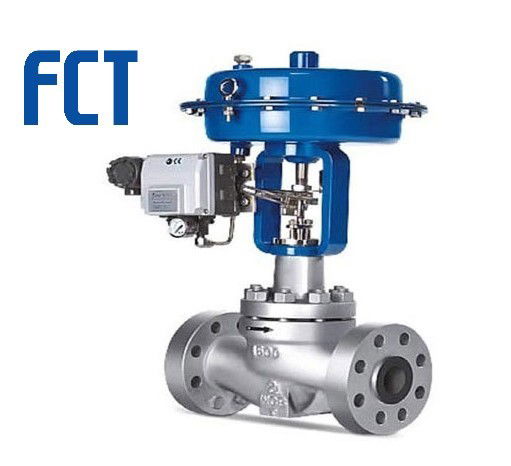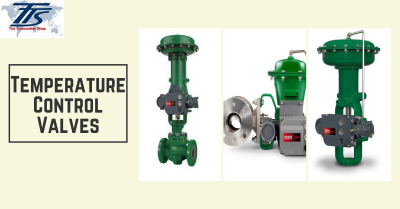Understanding the Value of Control Valves in Process Automation
Understanding the Value of Control Valves in Process Automation
Blog Article

Maximize Power Financial Savings and Comfort With Advanced Building Automation Controls
In the world of contemporary architecture and center monitoring, the integration of sophisticated building automation regulates stands as a critical advancement. By harnessing the power of automation, buildings can adjust, react, and progress in ways that were when unthinkable.
Energy Performance Advantages
Power effectiveness benefits can considerably reduce energy usage and operational prices in buildings. By applying energy-efficient practices and technologies, building owners and operators can accomplish significant savings while also adding to environmental sustainability. One of the main benefits of improving power effectiveness in structures is the decrease of utility costs. Energy-efficient systems, such as advanced structure automation controls, can maximize the use of sources like heating, lighting, and air conditioning, leading to reduced power expenditures gradually.
Moreover, boosted energy performance can prolong the lifespan of structure equipment and systems. By running a lot more efficiently, a/c systems, light, and various other building components experience much less wear and tear, causing decreased maintenance and replacement expenses. Additionally, energy-efficient buildings usually command higher building values and rental rates, supplying long-term monetary benefits to owners.
Furthermore, energy performance can enhance passenger comfort and productivity. Correctly managed interior environments with ideal lights and thermal problems develop a more favorable and pleasurable office, resulting in enhanced worker satisfaction and performance. Overall, the energy efficiency benefits connected with innovative building automation controls are complex, including expense savings, ecological stewardship, and resident health.
Boosted Convenience Control
Enhancing comfort control in structure settings needs an innovative integration of innovative automation systems for ideal resident wellness. By making use of innovative building automation controls, facilities can tailor the indoor atmosphere to satisfy the specific requirements and preferences of passengers. These systems make it possible for specific regulation of temperature, ventilation, and lighting, developing a comfortable and efficient atmosphere. Resident fulfillment and performance are very closely connected to thermal comfort, making it important to have systems in position that can adjust to changing problems in real-time.
Improved comfort control surpasses basic temperature level modifications. It includes features such as individualized setups, occupancy sensors, and all-natural light utilization to create a responsive and vibrant atmosphere. By including these innovative controls, structures can not just improve convenience yet additionally enhance power efficiency by optimizing system procedures based upon actual occupancy and usage patterns. Inevitably, prioritizing occupant comfort via innovative automation systems results in an extra enjoyable and healthier indoor environment.
Functional Efficiency Improvements

Moreover, the application of real-time surveillance and analytics tools allows structure drivers to recognize power ineffectiveness and functional abnormalities quickly. By continually keeping track of power usage patterns and system efficiency metrics, modifications can be made in real-time to maximize power intake and make sure peak functional efficiency. control valves. Furthermore, incorporating need response approaches right into structure automation controls can even more boost functional efficiency by dynamically readjusting energy use based on grid problems and prices signals
Indoor Climate Optimization
Reliable interior climate optimization is a fundamental element of structure automation controls, ensuring occupants' comfort and health while taking full advantage of energy financial savings. By using innovative sensors and controls, building automation systems can continuously readjust and monitor temperature, humidity levels, air top quality, and air flow to produce an optimum indoor setting. Preserving comfy and regular conditions not only enhances resident fulfillment but additionally increases productivity and general wellness.
Interior climate find this optimization also plays an essential function in energy performance. By fine-tuning home heating, air conditioning, and ventilation systems based on real-time data and occupancy patterns, constructing automation controls can significantly minimize energy intake - control valves. For circumstances, carrying out strategies such as demand-controlled air flow and thermal zoning can aid decrease energy waste while making certain that each location of the building receives the needed conditioning.

Lasting Atmosphere Creation
Structure automation controls not only enhance interior climate problems for power efficiency and owner comfort however likewise lay the foundation for creating a sustainable setting via tactical monitoring of sources and systems. By integrating sophisticated building automation innovations, such as sensing units, actuators, and intelligent software application, centers can readjust and keep an eye on energy use in real-time to minimize waste and minimize their carbon impact. These systems allow predictive upkeep, recognizing possible issues before they escalate and enhancing tools performance to boost long life and efficiency.
Additionally, lasting atmosphere creation expands past power monitoring to incorporate water conservation, waste reduction, and indoor air More Help quality renovation. Structure automation controls can manage water usage, find leakages, and ensure correct garbage disposal techniques, contributing to overall sustainability efforts. Furthermore, by controlling and monitoring ventilation and filtering systems, these innovations improve passenger wellness and productivity while decreasing energy intake associated with cooling and heating procedures.
Verdict
Finally, advanced structure automation regulates deal significant advantages in terms of power financial savings, comfort control, functional effectiveness, interior climate optimization, and producing a sustainable setting. By applying use this link these controls, buildings can attain ideal efficiency while reducing energy intake and boosting resident comfort. It is obvious that using advanced automation technology is crucial in improving structure efficiency and developing a much more sustainable future.
Power effectiveness advantages can considerably minimize energy intake and functional prices in structures. Overall, the energy effectiveness advantages connected with innovative structure automation controls are diverse, encompassing cost savings, environmental stewardship, and resident well-being.
In addition, including need feedback techniques into building automation controls can additionally boost functional performance by dynamically changing power usage based on grid problems and prices signals.
Building automation regulates not only enhance interior climate conditions for power efficiency and resident comfort however additionally lay the structure for developing a sustainable setting with tactical monitoring of systems and sources.In verdict, progressed structure automation manages deal substantial benefits in terms of power cost savings, comfort control, functional performance, indoor climate optimization, and creating a sustainable environment.
Report this page